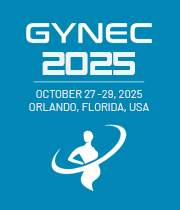Title : Achieving the unconceived: Honing the power to conceive through reproductive crypt technologies
Abstract:
Objective: To evaluate the integration of the Billings Ovulation Method® as a first-line approach for subfertile couples and explore its role as a complementary patient-centered strategy for achieving natural conception prior to resorting to and initiating assisted reproductive technologies.
Materials & Methods: A comprehensive review of Dr. Erik Odeblad’s scientific research on cervical crypt morphology and mucus production supports the Billings Ovulation Method®. This fertility management system educates women on identifying and interpreting cervical mucus patterns as biomarkers of peak fertility. A retrospective cohort study involving 384 subfertile couples conducted between 1999 and 2003 evaluated conception outcomes, analyzing data that included pregnancy rates, live birth outcomes, miscarriage rates, prior fertility knowledge, IVF history, and time to conception following instruction in the method.
Results: Of the participants who conceived (240 couples), 70% (169) resulted in live births, 14% (33) ended in miscarriage, and outcomes for 24 pregnancies were unknown. Notably, 60% of the couples were previously childless, and only 18% had prior knowledge of fertility signs. The average duration couples had been trying to conceive was 15 months, with conception occurring, on average, 4.7 months after proper instruction. Among the 207couples previously classified as subfertile (trying for over 12 months), 7 of 20 couples with unsuccessful IVF/ART histories achieved natural conception using the Billings Ovulation Method®. Approximately half of the women over age 38 also achieved pregnancy.
Conclusion: Understanding the physiological function of cervical crypts as the anatomical sites responsible for producing cervical mucus offers critical insights into regulating natural fertility processes. Cervical mucus, influenced by hormonal influences and secreted by specific crypt types, serves as the key biomarker for identifying the time of fertility. The Billings Ovulation Method®, grounded in this precise scientific understanding, enables women to recognize and interpret these mucus patterns accurately. As a non-invasive, patient-centered approach, its application can empower couples, especially those experiencing subfertility, to achieve conception naturally, potentially reducing the need for or enhancing prior unsuccessful IVF outcomes of assisted reproductive technologies.



